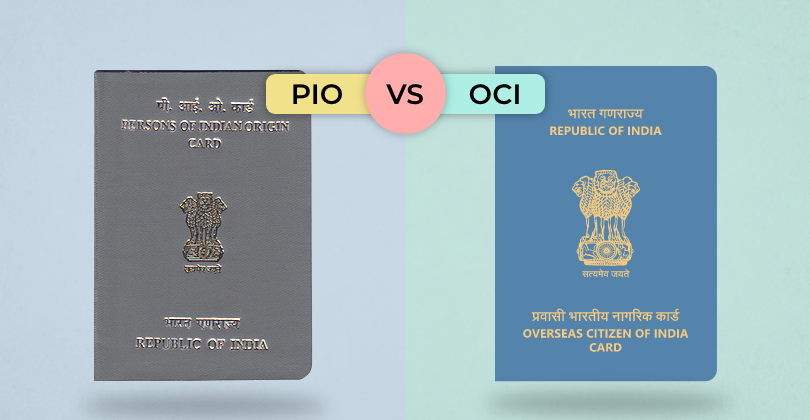Are you of Indian origin and living abroad? You've probably come across terms like PIO and OCI. These cards offer different benefits, but it can
In the context of loans and financing, borrowers often come across terms like part payment, prepayment, and pre-closure. These terms refer to different ways in which a borrower can repay a loan before the scheduled tenure. Each option has its advantages, disadvantages, and implications, and choosing the right one depends on various factors.
In this article, we will delve into the differences between part payment, prepayment, and pre-closure and explore which option might be better suited to different financial situations.
📗 Related reading- Prepayment Penalties on Personal Loans: All You Need to Know
Part Payment : A Step Towards Loan Closure
Part payment refers to repaying a specific portion of the outstanding loan amount before the scheduled repayment tenure. This can be a lump sum amount or a series of payments that collectively reduce the overall loan burden. The primary purpose of part payment is to bring down the outstanding principal amount, which, in turn, reduces the interest payable over the remaining tenure.
One of the key benefits of part payment is its ability to decrease the total interest from the outgo. Since interest is typically calculated on the outstanding principal amount, reducing this principal leads to lower interest payments. However, it is important to note that part payment might not necessarily shorten the loan tenure unless it is accompanied by a corresponding reduction in the repayment period.
Part payment is often seen as a flexible and convenient option for borrowers who come into unexpected financial windfalls or wish to utilise surplus funds to expedite their loan repayment process. Additionally, some financial institutions may charge a nominal fee for processing part payments, so borrowers should be aware of any associated costs.
Prepayment: Clearing The Slate Ahead Of Schedule
Prepayment, on the other hand, involves settling the entire outstanding loan amount before the scheduled tenure. This means repaying the principal and accrued interest in one go, effectively closing the loan ahead of the agreed-upon repayment period.
One of the primary advantages of prepayment is the potential cost savings. By repaying the loan early, borrowers can significantly reduce the total interest payable over the loan tenure. This is especially beneficial in long-term loans where the interest component can be substantial.
Prepayment is particularly advantageous for borrowers who find themselves in a better financial position than when they initially took out the loan. It allows them to free themselves from the burden of monthly repayments and eliminates the interest accruing over the remaining tenure.
However, it is crucial to be aware of any prepayment penalties or charges that some lenders may impose. These charges are designed to compensate the lender for the interest income they would have earned if the borrower had adhered to the original repayment schedule.
Pre-Closure: A Holistic Approach To Loan Settlement
Pre-closure is often used interchangeably with prepayment, but there are subtle differences. While prepayment involves settling the outstanding amount of a loan, including both the principal and interest, in a single payment, pre-closure is a more comprehensive process. Pre-closure goes beyond just repaying the principal and interest; it also considers any additional charges or fees associated with closing the loan.
In essence, pre-closure takes into account the entire spectrum of financial obligations tied to the loan, taking a more comprehensive approach compared to the singular focus on settling the outstanding amount in prepayment.
Opting for pre-closure is akin to settling all dues with the lender, ensuring that no financial obligations remain. This approach ensures borrowers have a clean slate, free from any future liabilities related to the loan. As with prepayment, borrowers need to be vigilant about any pre-closure charges that the lender may impose.
Choosing between prepayment and pre-closure depends on the borrower's financial situation and objectives. Pre-closure might be the preferred choice for those who want a complete and final resolution, while prepayment may suit those looking for a quicker but less comprehensive way to settle their loans.
Making the Right Choice: Factors to Consider
When deciding between part payment, prepayment, and pre-closure, borrowers should consider several factors to make an informed choice based on their financial goals and circumstances.
-
Interest Rates: Evaluate the interest rates on the loan. If the current rates are higher than the rate on the existing loan, it might be more beneficial to continue with the loan and explore part payment or prepayment options.
-
Loan Tenure: Consider the remaining tenure of the loan. If the loan is already in its final stages, part payment may be a more practical option, while prepayment or pre-closure may make sense for loans with a longer tenure.
-
Financial Position: Assess your current financial position. If you have surplus funds that can be utilised for loan repayment without affecting your financial stability, prepayment or pre-closure could be viable options.
-
Lender's Terms and Conditions: Thoroughly review the terms and conditions set by the lender, including any charges or penalties associated with part payment, prepayment, or pre-closure. This information is crucial for making an informed decision.
-
Future Financial Goals: Consider your future financial goals. If you anticipate the need for additional credit in the near future, it might be prudent to opt for part payment to reduce the monthly burden while keeping the credit line open.
Conclusion
Part payment, prepayment, and pre-closure offer a unique approach to settling loans ahead of schedule. The choice you make depends on individual financial circumstances, goals, and the terms set by the lender. By carefully evaluating these factors, borrowers can make a well-informed decision that aligns with their overall financial strategy.
AUTHOR
KreditBee As a market leader in the Fintech industry, we strive to bring you the best information to help you manage finances better. These blogs aim to make complicated monetary matters a whole lot simpler.







